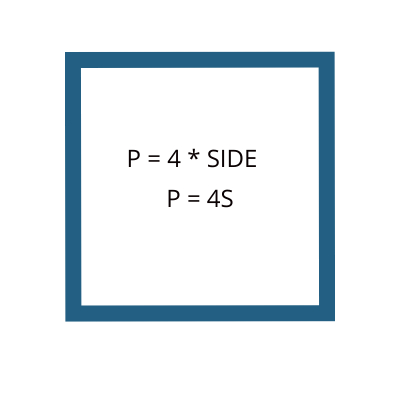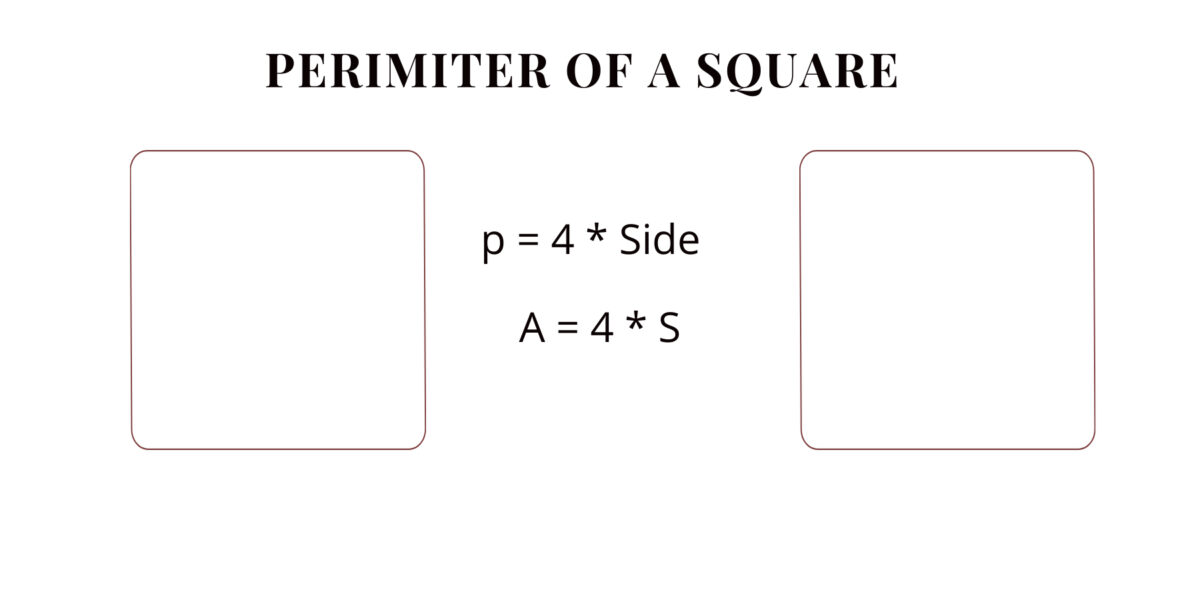Many students often seek to understand how to calculate the perimeter of a square. The perimeter of a square is the sum of the lengths of all four sides. If you know the length of one side of the square, you can find the perimeter using the formula:

Perimeter = 4 * side length
So, if “s” represents the length of one side of the square, the perimeter (P) can be calculated as:
P = 4s
For example, if the length of one side of a square is 5 units, the perimeter would be:
P = 4 * 5 = 20
Therefore, the perimeter of the square is 20 units.
Learnerscamp assists students in understanding geometric equations by providing educational resources such as how to find the area of a circle, interactive lessons, and practice problems. The website offers a structured approach to learning, helping students grasp fundamental concepts and apply them to solve geometric equations effectively. Additionally, learners can benefit from personalized feedback and progress tracking, enhancing their overall comprehension of geometry.
What is the circumference of a square?
The term “circumference” is typically used in reference to circles. In geometry, the perimeter is the term used for the total length of the boundary of a square. The perimeter of a square is found by adding up the lengths of all four sides.
If “circumference” was mistakenly used in the context of a square, you can simply find the perimeter by multiplying the length of one side by 4, as all sides of a square are equal. So, if the side length of the square is represented by ‘s’, the perimeter (P) would be:
P = 4s
There is no traditional concept of circumference for a square because the term “circumference” is specifically associated with the measurement of the boundary of a circle.
How to calculate the circumference of a square
The term “circumference” is typically associated with circular or curved shapes, such as circles. However, a square is a polygon with four equal sides and four right angles, and it doesn’t have a traditional circumference.
If you’re looking for the perimeter of a square, which is the total length of its four sides, you can use the following formula:
Perimeter of a square = 4 * side length
In this formula, “side length” refers to the length of one side of the square. Multiply the side length by 4 to find the perimeter.
If you are working with a circle and need to find the circumference, the formula is:
Circumference of a circle = π * diameter
For a square, however, use the perimeter formula mentioned earlier. If you have a specific context or question about a square, please provide more details for a more accurate response.
How do you find the perimeter of a square with the diagonal
To find the perimeter of a square when you’re given the diagonal, you can use the properties of a square. In a square, all sides are equal in length, and each interior angle is 90 degrees. If you know the length of one side or the diagonal, you can find the perimeter.
Let’s denote the length of one side of the square as s and the length of the diagonal as d.
Using the Diagonal:
To find the perimeter (P) of a square when you know the diagonal (d), you can use the following formula
P= d × √2
Example
Suppose you have a square with a diagonal length of 10 units. Using the formula P= d × √2 , you can find the perimeter (P).
P=10× √2
To get a numerical value, you can use a calculator to find the approximate value of √2, which is approximately 1.414.
P = 10×1.414 = 14.14
How to find the perimeter of a square given its area
The area of a square is calculated by squaring the length of one of its sides (A = side^2). To find the perimeter of a square, you have to know the length of one side and then multiply it by 4 since all sides of a square are equal.
When you have area (A) of the square, you can find the length of one side (s) using the square root: S = √A .Once you have the length of one side, you can find the perimeter (P) by multiplying it by 4: P = 4s
1. Find the length of one side (s) by taking the square root of the area: .
S = √A2. Calculate the perimeter (P) by multiplying the length of one side by 4: P = 4s
Learnerscamp.com is a cutting-edge platform designed to enhance students’ understanding of calculations. Our website provides a comprehensive learning experience, offering interactive exercises, and real-world applications to strengthen your grasp on image processing concepts. Whether you’re a beginner or seeking advanced insights, Learnerscamp.com guides you through the intricacies of image calculations, fostering a deeper understanding and practical proficiency. Elevate your knowledge with our user-friendly interface and expertly crafted content, empowering students to excel in image-related studies and applications.





